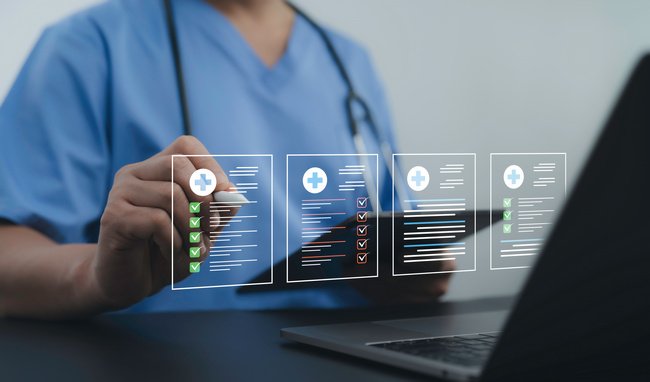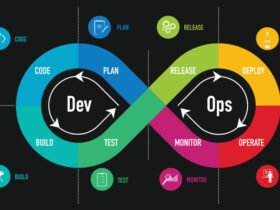For decades, healthcare has operated on a reaction-first model. People visit clinics when symptoms appear, not before. But as digital tools become more embedded in daily life, that timeline is starting to shift. Lowering risk through preventive checks, once rare and often overlooked, is becoming a regular part of care, thanks to platforms that make early engagement feel natural and accessible. Joe Kiani, founder of Masimo and Willow Laboratories, has long advocated for proactive approaches to chronic conditions. His latest innovation, Nutu™, focuses on giving people real-time feedback based on their daily routines. The platform encourages small, consistent actions that reduce risk and build awareness, without waiting for symptoms to drive urgency.
Regular health touchpoints aren’t just a feature of digital health, but they’re becoming a foundation. By integrating them into everyday routines, these tools help people stay connected to their health before complications arise. They create space for early action instead of a delayed reaction. Over time, that consistency can shift the entire trajectory of a person’s health.
Making Prevention Routine
Traditionally, check-ins have meant annual physicals or post-treatment follow-ups. While important, these visits are spaced far apart and often miss early warning signs. Many people only engage with care when something is wrong.
Digital health platforms are reshaping that pattern. These touchpoints now include short in-app prompts, wearable data summaries, behavior logs and real-time nudges. Instead of asking patients to schedule appointments months in advance, Nutu brings health monitoring into everyday life. Someone might receive a hydration reminder after a series of high-stress days or a gentle nudge to prioritize sleep after a dip in recovery data. These small, timely moments create a new kind of check-in, one that feels less formal but more frequent.
Making Preventative Engagement Feel Normal
One of the challenges in reducing is perception. People often associate check-ins with illness, not wellness. That mindset can delay early action and make health feel like a series of problems to fix rather than goals to maintain.
Digital tools help shift that mindset by making health tracking part of daily behavior. Platforms offer a range of inputs, from passive wearable data to quick self-reported mood check-ins, that don’t feel clinical. They feel routine.
This casual consistency builds comfort. When users interact with their health platform for a few minutes a day, they become more aware of their habits, more in tune with their patterns, and more likely to adjust when something feels off.
Joe Kiani, Masimo founder, remarks, “What’s unique about Nutu is that it’s meant to create small changes that will lead to sustainable, lifelong positive results.” That philosophy comes through in how check-ins are structured. Instead of feeling like clinical tasks, they mirror everyday routines such as eating, sleeping, moving, or even noting moments of fatigue. The emphasis is on consistency and reflection, creating touchpoints that feel approachable rather than medical. By framing these interactions as part of normal behavior, check-ins lose their stigma and gain power as steady guides for healthier habits over time.
Data That Builds Awareness, Not Anxiety
Another barrier to reducing the risk is information overload. Users may abandon health apps that flood them with numbers, charts or alerts. Digital check-ins only work when they create clarity, not confusion.
Platforms are designed to highlight simple trends. Instead of telling someone they’ve slept six hours for three nights in a row, the system may prompt a short, calming activity before bed. If data shows signs of instability, it may suggest earlier meals or more fiber, not charts, just actions. This clarity makes health management less intimidating. It also encourages users to stay engaged without feeling overwhelmed.
Supporting Providers with Structured Data
Digital check-ins also benefit care teams. Providers often lack insight into what happens between visits. When users engage with platforms regularly, the system can generate summaries that give clinicians a broader view of health patterns over time.
These summaries may include changes in sleep, activity, stress or eating behavior. During appointments, providers can use this data to ask better questions, offer more targeted advice and follow up on trends, not just symptoms. This collaboration turns check-ins into care continuity. It makes appointments more productive and helps users feel that their everyday effort is recognized and valuable.
Lowering the Barrier to Entry
Not everyone is ready to overhaul their routine. Many people avoid health apps because they expect too much, too many steps, too many inputs, or too steep a learning curve.
Effective digital platforms keep their check-ins light., for example, allows users to engage as little or as much as they want. Some people may sync a wearable and review insights daily. Others may check in twice a week and respond to a handful of prompts. Both are valid, and both offer value. This flexibility lowers the barrier to entry and invites more people to participate in their health without feeling overwhelmed.
The Practical Benefits of Digital Check-Ins
For employers, insurers and health systems, digital check-ins help reduce costs by catching patterns early. They allow users to manage stress, sleep, movement, and nutrition before those habits lead to chronic issues. A few minutes of daily engagement may help reduce complications that require medication, procedures or hospital stays. When reducing action becomes routine, everyone benefits, from individuals managing their wellness to systems managing population health.
Building a Culture of Continuous Care
The true power of digital health lies in its consistency. It doesn’t rely on someone reaching a crisis point. It supports them daily, helping them build awareness and take action when it matters most. Regular digital check-ins reflect that shift. They aren’t medical appointments or diagnostic tools. They’re small moments of clarity that help people stay on track, make informed decisions and take control of their health over time.
Change happens when it fits the user’s life. That means meeting people with tools that feel natural, supportive and rooted in real behavior. In a digital-first world, check-ins aren’t a special event. They’re just part of how we care for ourselves, quietly, consistently and with purpose.







